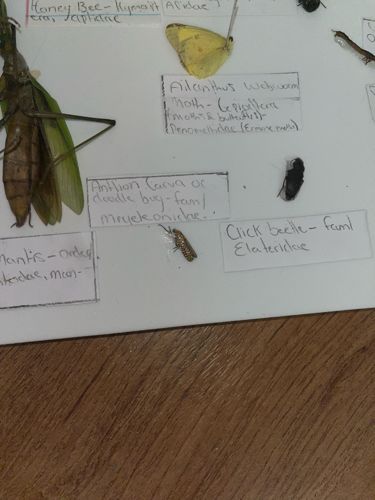Click Beetle
Scientific Name: Unknown (family Elateridae)
Order & Family: Order: Coleoptera, Family: Elateridae
Size: Typically 0.2 to 2 inches (5-50 mm), but some species can be larger.

Natural Habitat
Click beetles are diverse and can be found in a variety of habitats including forests, grasslands, agricultural fields, and gardens. Larvae (wireworms) live in soil or decaying wood.
Diet & Feeding
Adult click beetles are generally herbivorous, feeding on pollen, nectar, or plant sap. However, many are not known to feed at all as adults. Larvae (wireworms) are often omnivorous or phytophagous, feeding on roots, seeds, tubers, and sometimes small insects or decaying organic matter. Some species' larvae are predatory.
Behavior Patterns
Click beetles are known for their unique 'clicking' mechanism, which involves a spine on their prosternum engaging in a groove on the mesosternum, allowing them to flip themselves over when on their back, or to escape predators with a sudden jump. They are primarily nocturnal or crepuscular. The larval stage, known as wireworms, can live for several years in the soil.
Risks & Benefits
Risks: Wireworms (larvae) can be agricultural pests, causing significant damage to crops by feeding on roots and seeds. Benefits: Some click beetle larvae are predatory and can help control populations of other insect pests. Adult click beetles can be part of the food chain for birds and other animals. Their presence can also indicate soil health in some ecosystems.
Identified on: 9/22/2025